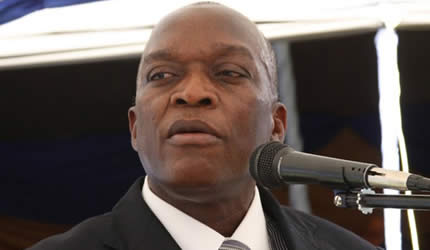Cotton producer price up
About 250 000 tonnes of cotton are expected to be delivered this year, down from 350 000 tonnes last year.
“All buying points have been opened as directed by the Agriculture Marketing Authority and deliveries have started,” Cotton Ginners’ Association director-general Mr Godfrey Buka said in an interview yesterday.
The producer price issue was contentious last season, as prices fell on the global market, but the prices fixed then were consistent with what was paid in most of the previous seasons in US dollars.
Cotton farmers were in a “crisis of expectations” against depressed international market prices, low yields per hectare and the high cost of production.
Cotton prices have remained under pressure for the past year and a half due to a surplus on the international market for the third consecutive year.
But despite the surplus, prices have shown recovery since the beginning of 2013 due to the robust demand from the largest consumer, China, and expectations that the US may witness a sharp fall in cotton hectarage this year.
Global cotton prices are largely influenced by the demand-supply situation in three major producing and consuming countries – China, India and the United States.
According to the latest data released by the International Cotton Advisory Committee, cotton production is likely to fall by 9,7 percent to 23,47 million tonnes in 2013/14 starting on August 1 this year.
Also See…
- Cotton contractors lose US$19m
- Cotton prices set to firm
- Cotton stakeholders form price negotiating team
- High price expected
Global consumption will reach 23,71 million tonnes in 2013/14, marginally higher than the 23,41 million estimated for the 2012-13 season. As a result, stockpiles will fall next season to 16,44 million tonnes from record high levels in 2012/13.
China is central to any discussion on cotton markets since it is the world’s largest producer (27 percent share in global production), consumer (40 percent) and importer (38 percent).
Another reason for China’s commanding influence in the market has to do with its government policies, through which it has bought about 10 million tonnes or 60 percent of the world’s cotton stocks since 2011.
Mr Buka urged farmers to shun side marketing to maintain good relations with contractors.
“Farmers should desist from the practice of side marketing to maintain good relations with contractors and also to avoid challenges in terms of financing the crop in the forthcoming season,” he said.
Last season, ginners financed cotton production to the tune of US$42 million. — Business Reporter/Wires.










Comments